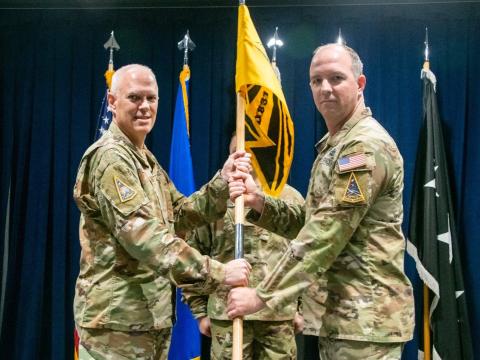On Point: Q&A With Col. Frederick “Trey” Coleman
As the commander of the U.S. Air Force’s 505th Command and Control Wing, Hurlburt Field, Florida, Col. Coleman manages the development and execution of air power-related command and control capabilities and personnel for the joint force.
Why are command and control (C2) improvements so important?
I’ve got this theory: there’s an inverse relationship between the functional need for C2 and the size of a military force. The smaller the force, the more you need C2—because you need to make sure you get the right weapon to the right place at the right time. And we’ve got a really small force right now. We can’t afford to lose half our bomber force in one mission. Which means we really need to get C2 right.
We’re at a really critical juncture in the C2 enterprise today. I’d argue that right now we have a second-generation C2 enterprise to support a fifth-generation fighter force. We just haven’t invested in C2 technology or processes the way that we’ve invested in the other core Air Force missions like Air Superiority or Global Strike. We’ve let it atrophy. We need to invest in command and control the way we’ve invested in other joint or core functions, and we need to invest now, or we’ll lose the next fight.
What are some of the challenges with existing command and control processes?
What we know is that our processes today are far too manual. I could give dozens of examples in which our processes are essentially interrupted by human interface. Anytime you have a human read or interpret digital data, then manually re-enter data into the same or a different system, we are interrupting and slowing down information flow. We’ve got to get out of the business of going digital-human-digital, and we’ve got to get into the business of going digital-digital.
What Air Force tools are you using to improve C2?
From a systems perspective, we have a number of software engineers assigned to our 805th Combat Training Squadron, and they’ve built an instrumentation dashboard. It allows us to quantitatively measure performance of humans and systems to compare
them to each other.
But our greatest asset is our people. The 505th is home to the Air Force’s largest pool of C2 subject matter expertise. Our people are matrixed into the Air Components, into tactical C2 units, into test and experimentation centers, into exercises. We work really hard to integrate the C2 enterprise, because unlike other core functions, we don’t have a Numbered Air Force for the C2 enterprise.
What insights are you seeing from the Advanced Battle Management System (ABMS) Cross Functional Team’s (CFT’s) model?
We are continuing our work with the ABMS CFT to model battle management functions. They’ve taken a systems engineering approach to battle management and really have broken it down into the smallest possible functions. What the CFT’s model does is it helps us identify where the humans in the loop really shouldn’t be. And then [with the] instrumentation dashboard, when we do have new technology, and a lot of it exists, we can plug it in at the 805th CTS/Shadow Operations Center-Nellis—it is a phenomenal facility—and that helps us to prove, to quantify, to measure how much can we speed up this process when we take the human out of the loop.
What is needed next for command and control?
We need to continue to invest in software. We need to continue to invest in data. We need to continue to invest in hardware. What we don’t need to invest in is facilities. A lot of times when we think about C2, we think about giant exclusive facilities and that’s not what we need. What we need is the ability to communicate decisions, to conduct resource management—that’s what command and control is—in an agile, automated way.





Comments